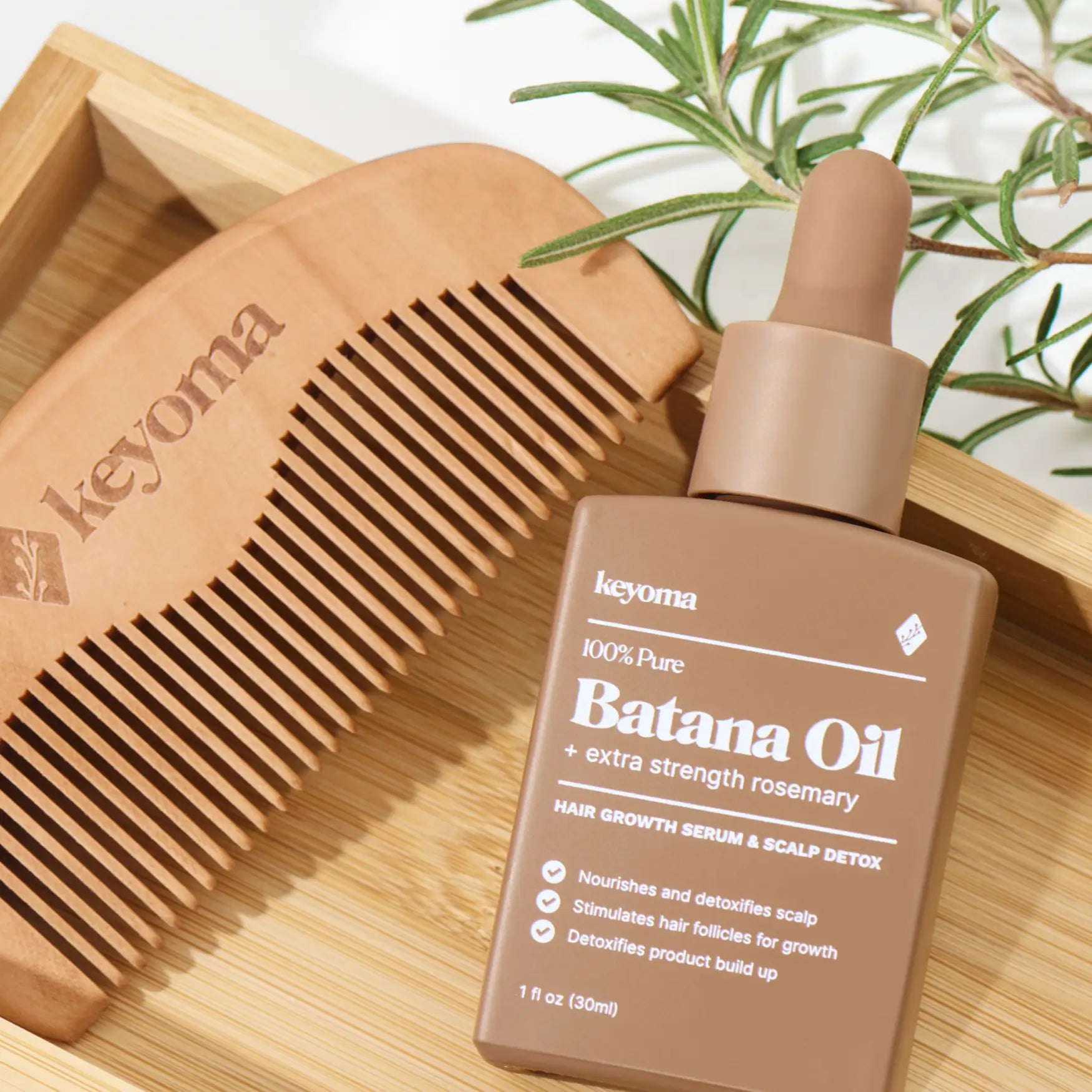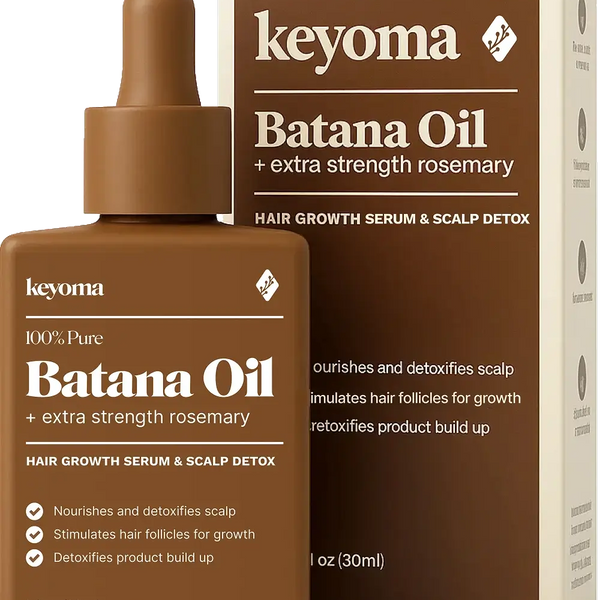In this article
They say good hair care is timeless, but anyone who’s ever survived winter frizz or summer humidity knows that each season plays by its own rules.
Spring, in particular, comes with its own set of quirks. Warmer air, rising humidity, and just enough wind and pollen to turn smooth strands into a halo of frizz.
Fortunately, that doesn’t mean your routine needs a full overhaul. In this guide, I’ll walk you through the best spring hair care tips to keep your hair shiny, frizz-free, and full of life no matter what the weather throws your way.
Does Hair Behave Differently in Spring?
After months of cold, dry air and indoor heating stripping moisture from your hair, spring steps in with a completely different energy. More daylight, warmer temperatures, higher humidity, and for many places, a fresh spike in wind and allergens.
This shift can change how your scalp and strands behave, whether you notice it right away or not.
-
Increased humidity makes the hair cuticle swell, especially if it’s already porous from past heat damage or winter dryness. That’s often why frizz and puffiness creep in, even when you haven’t changed your routine.
-
As the weather warms, sweat and oil production also ramp up, leaving the scalp greasier and sometimes disrupting its microbiome balance.
Moreover, for anyone coming out of dry, heated indoor air and heavier winter products, the shift can be jarring. Roots start to feel oilier, but your ends might still be brittle from winter.
That in-between phase is where buildup, dullness, and moisture imbalance tend to show up..
Hair Loss in Spring
Hair loss in spring is a real thing. In fact, a 2009 Swiss study that tracked over 800 women for six years found two natural shedding peaks each year: a major one in late summer or early autumn, and a smaller one in spring.
That means your hair naturally “renews itself” twice a year.
And all things being equal—if you’re healthy, eating well, and not dealing with internal imbalances—this kind of spring shedding is completely normal. It’s simply part of your hair’s natural growth cycle, where old strands make way for new ones.
Hair growth follows a natural cycle: anagen (growth), catagen (transition), and telogen (resting) and exogen (shedding). At any given time, most of your strands are in the anagen phase, while a smaller percentage shifts into telogen.
What changes in spring is that more strands than usual are wrapping up their cycle and shedding to make room for new growth.
Spring Hair Care Tips & Routines
Refresh Your Products for the Season
Winter products tend to be thick, rich, and loaded with heavy oils or butters. They're great for cold, dry air, but not so much for the warmth and humidity that spring brings. That said, your first move in spring should be to swap out the old winter hair care products:
-
Switch to a clarifying shampoo: Ditch cream-based or co-wash formulas in favor of clarifying or chelating shampoos. These break down buildup, excess oil, and hard water minerals. Look for gentle surfactants, salicylic acid, or apple cider vinegar.
-
Go for lightweight hydration: Swap out heavy conditioners and butters for formulas with glycerin, hyaluronic acid, or aloe vera. These humectants hydrate without heaviness and work well for fine or frizz-prone hair.
-
Update your styling products: Trade thick creams for lighter stylers like mousses or gels with polyquaterniums or PVP. These offer hold while helping protect against spring humidity.
Avoid Layering Too Many Products
Unlike the dry air of winter, spring naturally brings more moisture into the air. That means there’s no need to keep piling on hydrating products. The goal now is to work with that ambient moisture, letting your hair breathe instead of coating it with layers of product.
On that note, here are some minimalist-friendly adjustments you can make to keep your routine light but effective.
-
Choose multitasking formulas: Use leave-ins that combine hydration, frizz control, and UV protection in one. This keeps your routine light and functional.
-
Use mist instead of mask: Save the deep-conditioning masks for occasional use. For regular care, opt for water-based sprays with humectants like glycerin, aloe vera, or panthenol. They hydrate without making your strands heavy or greasy.
-
Seal in moisture with hair oil: Apply a drop or two of a light oil (like jojoba, batana, or grapeseed) only to your mid-lengths and ends.
-
Let hair breathe between wash days: On non-wash days, skip reapplying leave-ins or oils unless your hair feels truly dry. Spring’s humidity often gives strands enough natural bounce on its own.
Keep Frizz Down With the Right Styling
When humidity rises, frizz follows as a result of your cuticle lifting. The higher your hair porosity, the worse the frizzing can get. To avoid that puffed-up look, here are ways to create a light but effective barrier against spring air:
-
Apply products with anti-humidity polymers: Look for stylers with polyquaterniums, PVP, or acrylates. These ingredients form a breathable seal over each strand, locking out excess moisture without making hair stiff.
-
Use lightweight gels or mousses: Gels help define waves and curls while keeping flyaways flat. Mousses, meanwhile, are great for volume and frizz control at the same time, especially for finer hair.
-
Embrace cast techniques: If you have wavy or curly hair, allow your gel or mousse to dry into a cast before scrunching it out. This creates a protective coating and helps maintain shape longer.
-
Style when hair is damp, not wet: Product grip is better when hair is damp, which helps polymers set more evenly.
-
Finish with a humidity-resistant spray: Lock in your style with a finishing mist designed to resist moisture reversion. These are especially helpful on high-humidity days or when you're out for hours.
Protect Hair from Spring Sun and Pollution
Between longer daylight hours and more time spent outdoors, spring exposes your hair and scalp to more UV rays than you think. Add to that urban smog, pollen, and wind, and it’s easy to see how strands can take a hit in both strength and appearance.
Here’s how to defend your hair without overcomplicating your routine:
-
Use UV-filtering leave-ins: Look for sprays or creams that contain UV filters like benzophenone-4 or ethylhexyl methoxycinnamate. These help prevent protein breakdown in the hair shaft and reduce sun-induced dryness or color fading.
-
Wear a physical barrier: Hats, especially wide-brimmed styles, block direct sun and trap less pollution. Choose breathable fabrics like cotton or linen if you're sensitive to scalp sweat.
-
Add antioxidant-rich products: Use serums or leave-ins that contain vitamin E, green tea extract, or ferulic acid. These neutralize free radicals generated by pollution and UV exposure.
-
Rinse pollutants off after long outdoor exposure: If you’ve been out all day, do a quick rinse or co-wash to prevent buildup from settling on your scalp and weakening the follicle barrier.
-
Shield colored or treated hair: Color-treated strands are more vulnerable to UV and air pollution. Use sulfate-free cleansers and bond-protecting masks to help maintain color vibrancy and strand strength.
Restore Shine and Smoothness
One of the side effects of frizz is that it scatters light, leaving your hair looking dull and uneven instead of glossy and smooth. Here’s how to bring back shine and softness without weighing your strands down:
-
Use a pH-balancing or acidic rinse: Rinses with apple cider vinegar, citric acid, or hibiscus help flatten the cuticle so light reflects better. They also help rebalance after alkaline shampoos or hard water exposure.
-
Try a bond-building treatment: Use a weekly mask with ingredients like hydroxypropyl gluconamide, glycine, or bis-aminopropyl diglycol dimaleate. These repair internal damage and boost shine from within.
-
Skip heavy silicones: Instead of dimethicone-heavy products, try shine boosters that use plant-based esters, argan oil, or amla. These smooth the surface without forming buildup.
-
Apply product on damp hair: Otherwise, when water is too present, it can dilute leave-ins and leave a patchy finish. Apply on towel-dried hair for better slip and even coating.
-
Minimize over-manipulation: Too much brushing or restyling lifts the cuticle. Let your hair set, and preserve styles using silk or satin pillowcases to prevent friction overnight.
Get a Trim
Spring is the best time to cut off that winter damage and reset your length for healthier growth. Here's why it’s worth booking your next haircut:
-
Removes split ends before they worsen: Split ends can travel upward and fray the shaft, making hair look thinner and rougher over time. A light trim stops that spread before it creeps up.
-
Refreshes shape and bounce: Especially if your ends are weighed down or losing shape, trimming them lifts the overall look. This is especially helpful if you air-dry more often in spring.
-
Reduces tangles and friction: Damaged ends catch on each other and on fabrics, which leads to more breakage. A clean trim smooths things out and helps hair glide better.
-
Preps hair for UV and humidity: Healthier ends are more resilient against spring’s rising UV levels and humidity.
What's more is that you don’t even need a dramatic chop. A light dusting of ½ inch to 1 inch is usually enough. If you see excessive split ends or tangles even after styling, that’s a good sign it’s time.
Read our guide on low-maintenance hairstyles for some of the best looks you can try this spring.
Embrace Low-Heat and Natural Styling
Spring is the perfect time to ease up on heat tools. Not only are you less likely to blow-dry every morning, but your hair is also dealing with extra moisture from humidity, which makes it more vulnerable to heat damage.
On that note, here are a few things to keep in mind:
-
Switch to air-drying: After washing, use a microfiber towel or cotton T-shirt to blot excess water. Let your hair dry naturally while applying a lightweight leave-in or curl-enhancing spray.
-
Try heatless curling methods: Flexi rods, twist-outs, or overnight braids can give waves or definition without any heat. These are especially useful for coily or wavy hair textures that tend to frizz in spring.
-
Go for protective styles: Braids, buns, and loose twists help reduce manipulation and exposure to humidity. Just avoid overly tight styles to prevent tension on your roots.
-
Use low-heat when necessary: If you must use heat, drop your blow dryer to a medium or cool setting, and always apply a heat protectant first. Stick to ceramic tools with temperature control.
Check out our full guide on the best foods for hair growth to nourish your strands not just in spring, but all year round.
Clean Out Expired or Unused Products
A new season calls for a fresh shelf—and a fresh self. Spring is the perfect time to toss anything expired, unused, or simply not serving your hair anymore. Otherwise, it’s just clutter taking up space. Doing this helps you:
-
Get rid of hidden irritants
-
Avoid unnecessary layering
-
Streamline your hair care routine (less clutter, more clarity)
Here’s how to do a smart cleanup:
-
Check the PAO (Period After Opening): Most products last 6–12 months after opening. If there’s no label, trust your senses and go by smell, texture, or any separation.
-
Toss anything off: If it smells odd, clumps, or changes color, it’s gone bad or contaminated.
-
Make space for seasonal swaps: Once you’ve cleared out the old, bring in lighter, spring-friendly formulas that match the weather.
Frequently Asked Questions (FAQs)
Why am I losing so much hair in April?
April falls right in the heart of spring, and it’s also one of the most common times to notice seasonal shedding. Warmer weather, more sun exposure, and hormonal shifts can all contribute to the timing.
Is spring hair loss a real thing?
Hair loss in spring is a real thing and is completely normal. Based on research, this is part of the telogen and exogen phase where old hairs fall out to make room for new growth. It happens naturally and often resolves on its own after a few weeks.
How to prevent dry hair during the spring?
Dryness in spring usually comes from product buildup, leftover winter habits, or shifting humidity. Switch to clarifying shampoos, scale back on layering too many products, and use humectant-based hydrators like glycerin or aloe vera. Drinking more water also helps, especially if you’re active.
Keep Your Hair Full and Bright All Spring Long
Spring may come with a few added curveballs, from humidity and pollen to UV and warming temperatures. But the core principles of hair care haven’t changed.
Lighter products, a less-is-more approach, and consistent habits like eating well and using a science-backed nourishing oil still carry over from season to season and can go a long way.
For more spring hair tips, seasonal care breakdowns, and natural product picks, head over to the Keyoma Blog. We’ve got you (and your roots) covered!
Featured Product
100% Pure Batana Oil + Rosemary









